Last Updated on August 31, 2023 by David
Drive more sales, build better relationships, and train smarter teams.

The modern online shopper is more equipped and ready to share their experiences than ever before. In fact, each and every one of us is an online shopper to a measurable degree. One positive mention from an influential shopper can sometimes increase your marketing ROI by 11x! On the other hand, one negative remark from the same shopper can make crawling out of a swamp seem like cakewalk.
Be it negative or positive, providing exceptional customer service is increasingly important for eCommerce businesses. Not only has the general philosophy changed over the years but the methods and means have also evolved beyond a simple email address and phone number.
When done well and built into the culture of your business, customer service can become an efficient vehicle for your marketing strategy, customer retention/conversion workflows, and more importantly, a consistent method of driving awareness to your brand. Customer service has a lifecycle of its own because it’s not one tool or one process. A successful eCommerce business needs to evaluate how customer service fits into the entire business architecture and learn how to extract value out of every customer interaction in order to boost revenue.
Top customers generate somewhere between 3x to 5x more than your typical customer base. — BigCommerce
Multi-Channel is King for eCommerce
The fact that your customers are everywhere is not news. Some live in Europe, some live in Asia, and perhaps a majority in North America. Not only are your customers geographically segregated but they’re also age segregated. Similarly, different customers prefer different methods of support when it comes to getting help from you. Some will prefer email while others will prefer social media. Younger shoppers might prefer text messaging while busy dayworkers prefer to chat online during their day. Inevitably, some shoppers will prefer to search for their own answers in your knowledge base.

Multi-channel customer service is a strategic way to manage all customer related questions about your business. Many businesses mistakenly interpret multi-channel customer service as simply the ability to handle customer service for all channels. True multi-channel customer service enables everyone on your team to manage customers’ various conversational touchpoints in a unified method. This means being able to leverage important customer data to effectively support the customer regardless of what channel they use to contact you. More importantly, doing multi-channel customer service well in eCommerce means being able to transition customer conversations from one channel to another with near-perfect content integrity.
A distressed rant about a purchase on your public Facebook page does not mean your team needs to resolve the customer’s issue publicly. Instead, a well established multi-channel customer service team must be able to extinguish the social media conversation tactfully and continue with resolving the customer’s issue via chat, email, or even text messaging. Multi-channel customer service requires the communications platform you use to be quite robust (like Reamaze). Some specific multi-channel related features to look out for:
- Chat (embeddable on your storefront and/or specific product pages/checkout pages)
- Social media integration (Facebook Page comments, Facebook Messenger, Twitter and Twitter DMs, Instagram)
- SMS/MMS mobile integration
- Email integration
- Knowledge base (hosted on its own URL, in-line with your site content, or embedded on your storefront chat box)
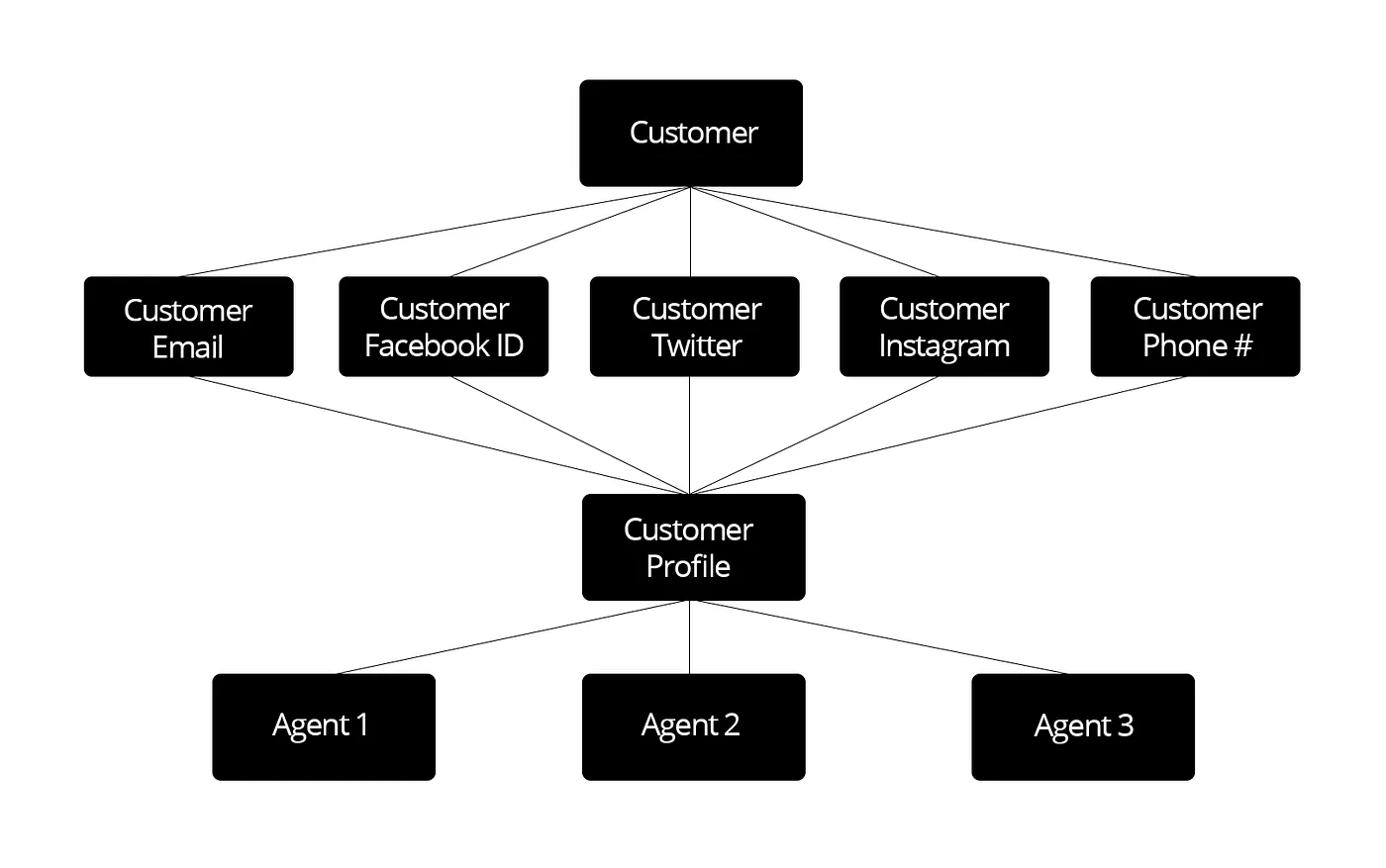 A great multi-channel setup requires the ability to associate a customer to all available channels.
A great multi-channel setup requires the ability to associate a customer to all available channels.Having adequate coverage for the above channels will ensure your customers have a great experience while shopping at your store. Customers will also appreciate the consistent experience and attention they receive whenever and wherever they reach out to you. While having disparate tools can get the job done, having all channel conversations under one roof and in a unified shared inbox will save lots of time and resources for your team and build confidence in customers that they’ll receive the same level of care after they’ve made a purchase. Don’t believe us?
63% of online consumers said they were more likely to return to a website that offers live chat. — Forrester Research
75% of consumers think companies should make answers to all their common questions available via Smartphones. — Synthetix
55% of consumers now expect companies to provide customer service via social media sites such as Facebook. — Synthetix
Failure to respond via social channels can lead to up to a 15% increase in the churn rate for existing customers. — Gartner Research
Customer Service and the New CRM for eCommerce
Managing customer relationships start before you make the first sale. Everything from driving awareness to your brand via in-bound marketing to preventing site/cart abandonment, and from engaging customers with a coupon code to answering specific product questions, are all opportunities for you to build a relationship. And like all good relationships, it starts with proactiveness and trust.
Traditional CRM (customer relationship management) systems built for a dedicated sales team does not scale well for eCommerce. For eCommerce businesses, every customer is a potential sale and every buyer is a potential repeat buyer and traditional sales-based CRM does not work. Instead, eCommerce businesses must focus on finding a conversational based CRM platform where the focus is on having high-converting and valuable conversations.
The CRM of yesteryear generally consisted of contact management, opportunity management, and pipeline management. CRM concentrates on leveraging data to create a bird’s-eye view of potential and existing customers. This level of managing data with opportunities enables organizations to develop new offerings, retain customers on a regular basis, and increase loyalty** by targeting cohorts of customer characteristics. The downside to traditional CRM is its one-sided nature. Businesses defined the metrics for how a customer relationship is created and managed is entirely focused on generating more sales.
** For Reamaze’s in-depth article on how to design customer loyalty, read https://betterthansure.com/designing-customer-loyalty-e7023dac8f98
Modern CRM systems still use data to build a clear picture of who the customer is, albeit through better technological solutions such as APIs and dynamic plugins. However, to gain a deeper level of customer insight, businesses must also decipher its customers’ habits through an increasing array of social channels, such as those mentioned above, to create value exchanges. The multivariable and dynamic approach to building relationships certainly made better use of the data available. This concept may seem familiar to you if you’ve dabbled with Social CRM:
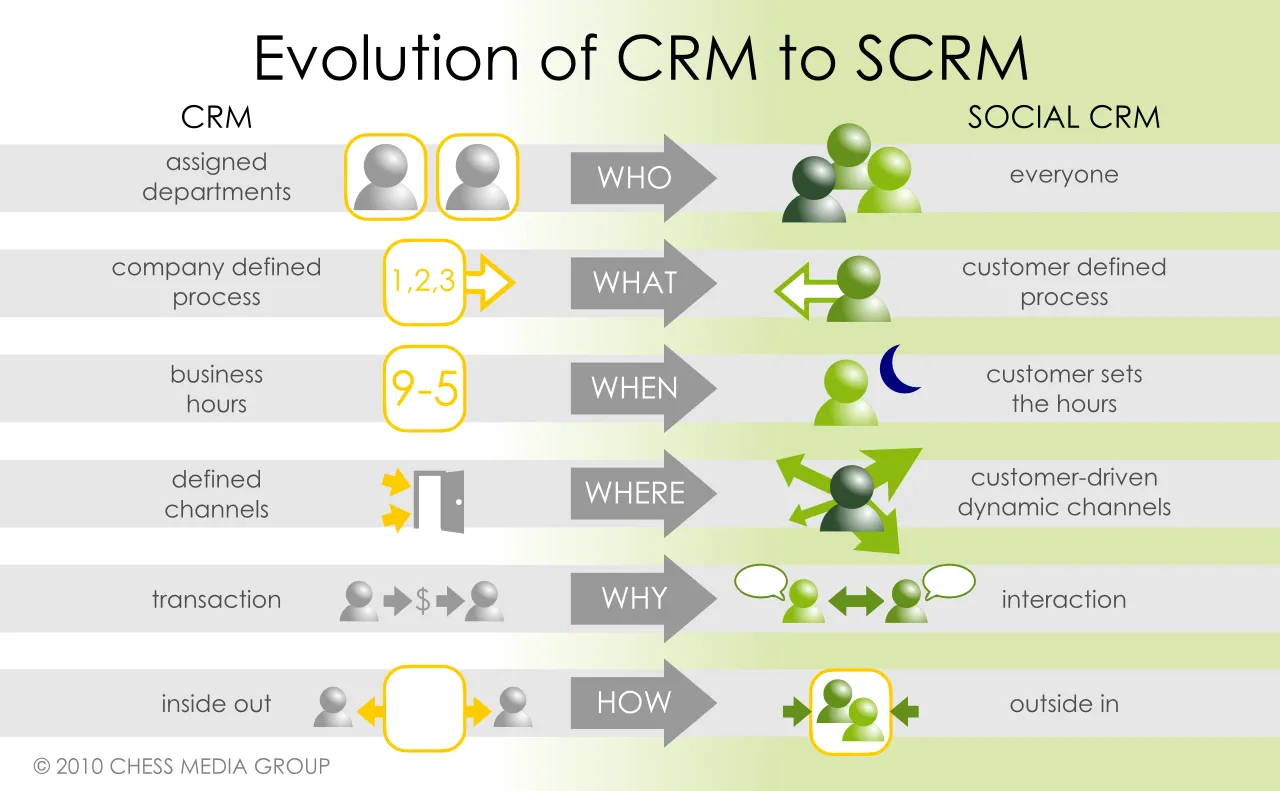
Source: Chess Media Group
While social CRM is great for the modern business, eCommerce businesses need to take this one step further. A distinct advantage for eCommerce businesses is conversational volume. According to an internal study conducted by our team here at Reamaze, eCommerce businesses, on average, accrues more than 3x the conversational volume compared to a software business per month and more than 5x the conversational volume compared to a services based business per month. In addition, eCommerce customer service related conversations average 13 messages per thread while non-eCommerce customer service related conversations average just 8 messages per thread.
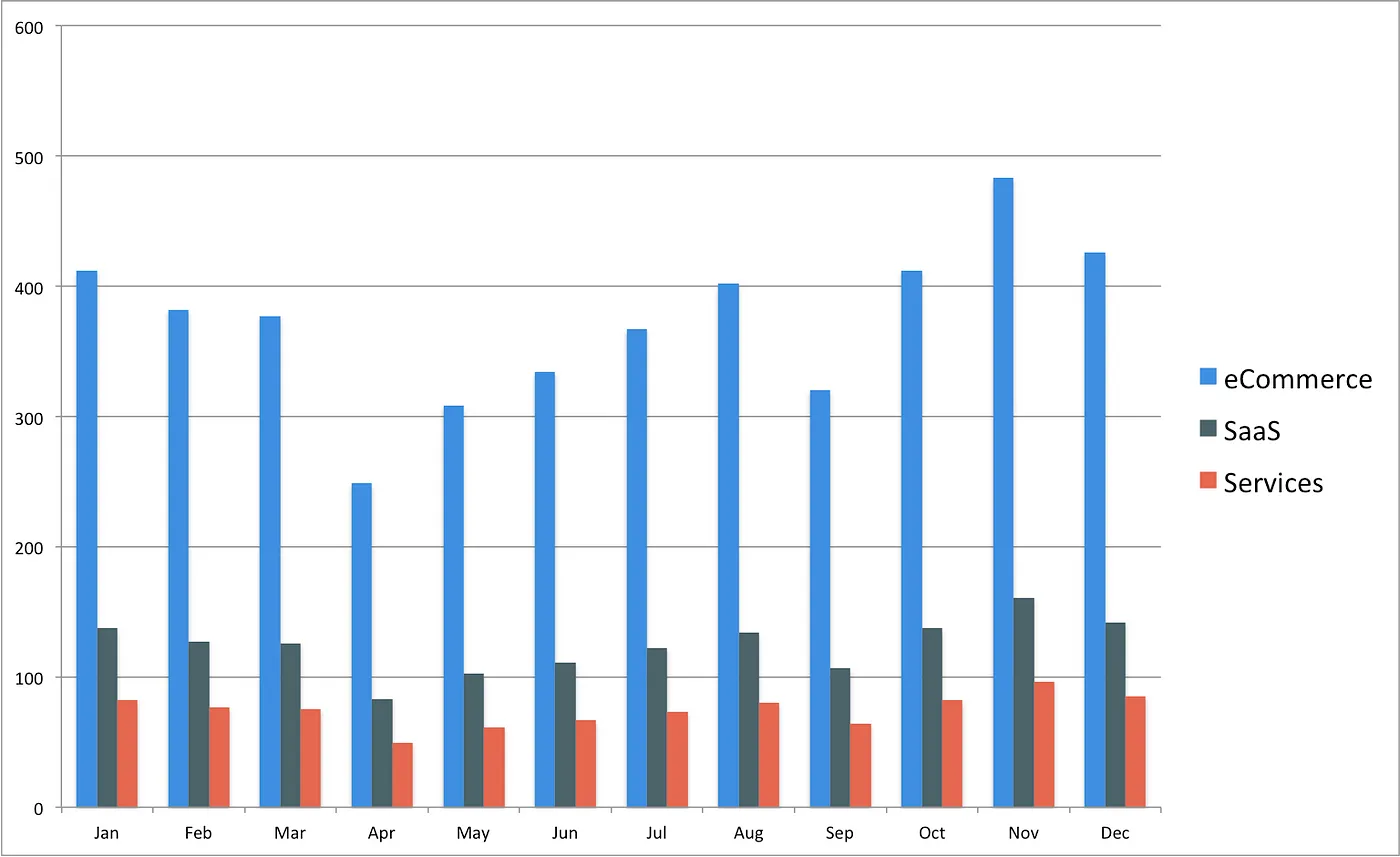
Source: Reamaze.com — Average conversational volume by month 2016
Higher conversational volumes mean more opportunities to connect with customers both in a reactive manner as well as a proactive manner. In the chart above, it’s important to note that the top 5 most used channels for connecting with customers have robust data connections to empower customer service agents to better service the customer while building better relationships and painting a clearer customer profile at the same time:
- Customer contact details (name, emails, social accounts, phone numbers)
- Customer conversation histories
- Order data such as amount, historical orders, status, shipment data (if connected to an eCommerce platform like BigCommerce)
- Order creation during a conversation (if connected to an eCommerce platform like Shopify)
- Customer location
- Customer browser information and IP information
- Custom data (such as through Reamaze’s data attributes API)
- 3rd party integrated data such as MailChimp or Stripe
- Zapier connected data
The great news is that most major CRM platform providers already see staggering growth from the e-commerce industry and are now offering specific features to address its needs. If you’re an eCommerce business looking to expand upon your customer relationship management processes, here’s what we recommend:
- A platform that handles multi-channel conversations with a centralized dashboard for your team
- A platform that offers a conversational-based CRM system with relevant data connections to the products you use most
- A platform that offers customer segmentation and robust customer profiles
- A platform that integrates natively with popular eCommerce platforms
The Rise of Chat and the Downfall of Email
This article by Scientific American puts it perfectly:
It’s easy to imagine that [Email] will continue to feel more appropriate for formal communications: agreements, important news, longer explanations.
There’s nothing inherently wrong with running customer service via email. It’s reliable, familiar, and more permanent. However, for eCommerce customer service, email’s claim on the iron throne is nearing its end. Its ability to drive instant gratification to your brand is limited. Its ability to drive instant engagement pales in comparison to chat and proactive chat**. And the biggest issue with email is its huge barrier to entry. Customers looking for answers need a faster channels such as chat or social media. And unlike email, chat has a transparent identity. How your team responds, how fast they respond, and how helpful they are during a chat directly impacts the culture and image your brand represents.
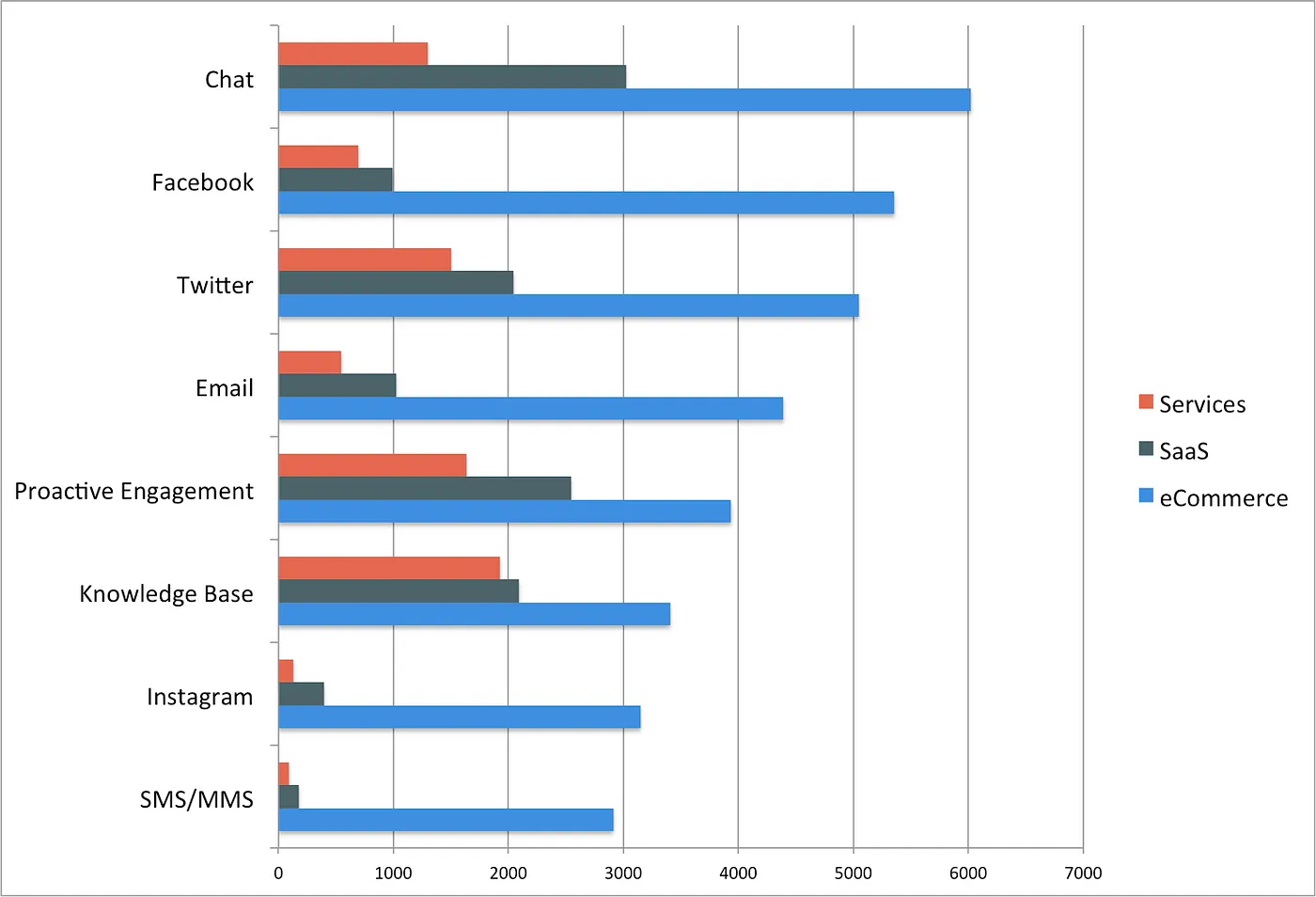
Source: Reamaze.com — Average conversational volume by type in random sampling
** For our in-depth article on how to use chat to build a successful eCommerce business, read https://betterthansure.com/build-a-successful-ecommerce-business-using-chat-3e7aaeca3b92
If you’re looking to integrate chat for your eCommerce business, here’s what we recommend:
- Look for a platform that offers embeddable chat boxes directly onto your website.
- Find a platform that provides either real time messaging or classic session-based live chat. Real time messaging has the added benefit of allowing customers to contact you while you’re on the go. The effectiveness of messaging customers like iMessage has been a hugely popular trend among eCommerce businesses.
- Make sure the chat product you choose allows your marketing and sales team to take advantage as well. For example, Reamaze offers proactive engagement as an extension to real time messaging and classic live chat. Through proactive engagement, you can send targeted content and call-to-action messages directly to customers browsing your website or website product. Clearly defined rules and conditions can help mitigate abandonment as customers are about to leave or help increase conversions if you’re able to send a coupon at just the right time.
- Choose a platform that integrates chat with all of your other conversational channels such as email, social media, and mobile. This will ensure your multi-channel conversations augment your CRM processes and ensure a consistent customer experience.
38% of online consumers said they had made their purchase due to a chat session. — Forrester Research
45% of consumers will abandon their online purchase if they cannot find a quick answer to their questions. — Forrester Research
The Age of Self Help
A self-help knowledge base closes the loop for eCommerce customer service lifecycle. When your team is not available to answer questions through social media, email, mobile, or chat, a self-help knowledge base not only provides in-depth articles on most commonly asked questions but also instills a high degree of trust within shoppers.
Having a well constructed knowledge base helps convert hesitant customers who’re not looking to write in about their questions or issues. As a branding mechanism, the knowledge base allows you to display polished content such as information about the source of your product, tutorial videos on how to use your product, and even images to help customers navigate its potential complexities.
67% of consumers use web self-service knowledge to find answers to their questions. — Forrester Research
A well constructed knowledge base will have the following characteristics:
- Branded to fit the rest of your website or content or integrated into your website or content
- Has a good mixture of text content as well as image and video assets to help guide the customer
- Is accessible in various location such as a dedicated knowledge base / FAQ page, within an embedded contact form on your website for self-help, and/or exists contextually while the customer is browsing for a specific product
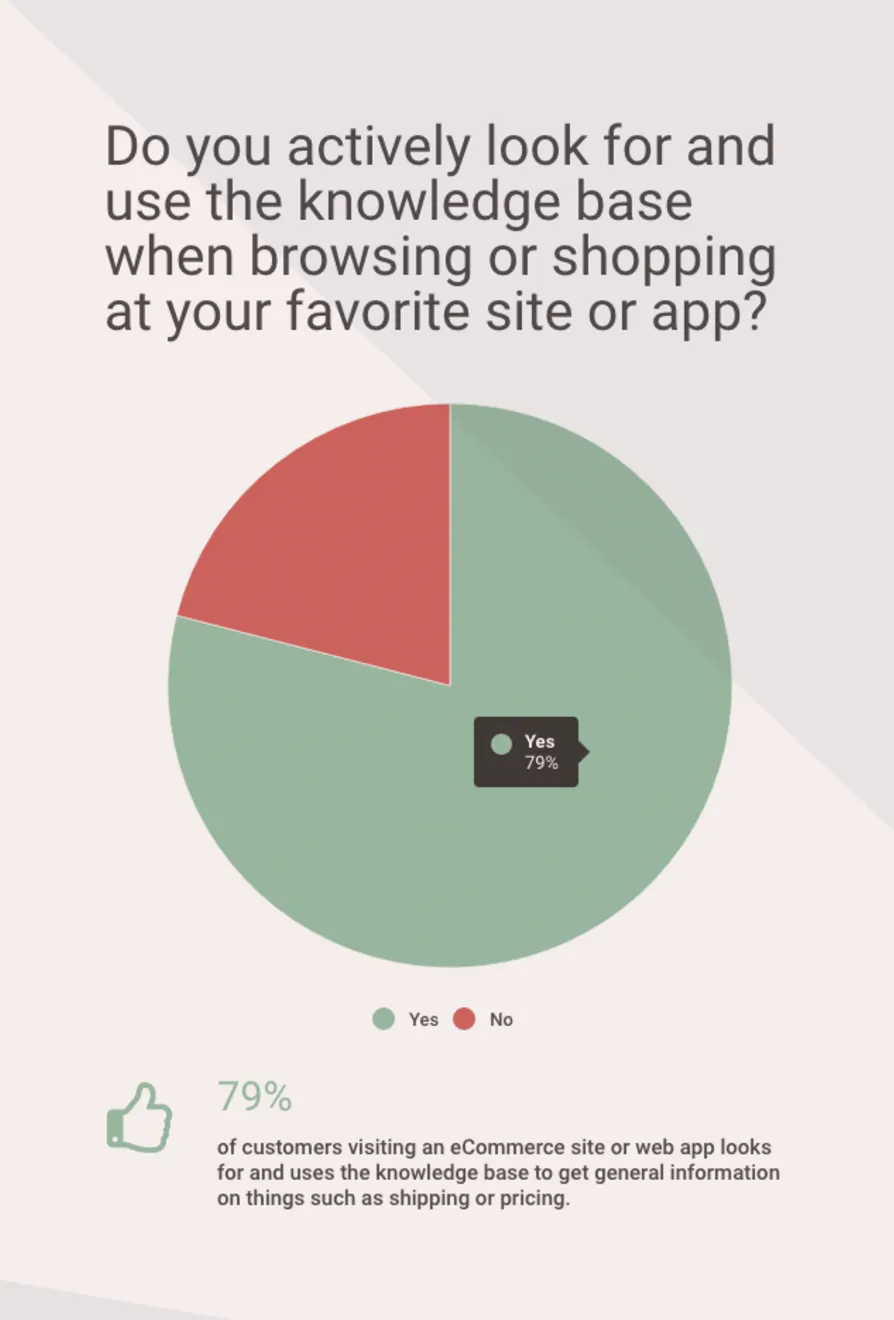 Infographic Provided by Reamaze
Infographic Provided by ReamazeSome eCommerce businesses believe a knowledge base is not necessary if they’re able to convey relevant information in specific landing pages such as “About Us” or “Info”.
However, our research shows that more than 79% of customers browsing an eCommerce storefront actively seeks out a knowledge base as a means to access all relevant information in a single repository.
Other benefits of having a robust knowledge base include being able to link to them in active conversations with customers, being able to share them as content on a one-off basis, and linking to them in promotional marketing material.
To see the rest of this infographic, head on over to https://www.reamaze.com/resources
Customer Service as a Value Center
Customer service is oftentimes seen as a cost center for businesses. When customer service isn’t an active part of your growth strategy, it can be. Proactive customer service requires planning from before you make your first sale. Even if you’re just starting out, it’s important to think about the entire lifecycle of your customer service operations and how it can potentially fit into other aspects of your business such as sales, marketing, and branding. With the right tools and strategies, leveraging the value-creation aspects of better customers can easily double or triple your revenue. through increasing averaging order values, customer loyalty, and repeat customer purchases.
About Reamaze
Reamaze is a customer communications platform designed for businesses. With Reamaze, you can support, engage, and convert customers in a single platform using chat, engagement automation, social media, mobile, and email. Reamaze helps businesses effectively by also providing knowledge base software, CRM software, and automation features. Check out Reamaze at https://www.reamaze.com.
